Gennaro Cuofano's Blog, page 167
February 16, 2021
Business Glossary
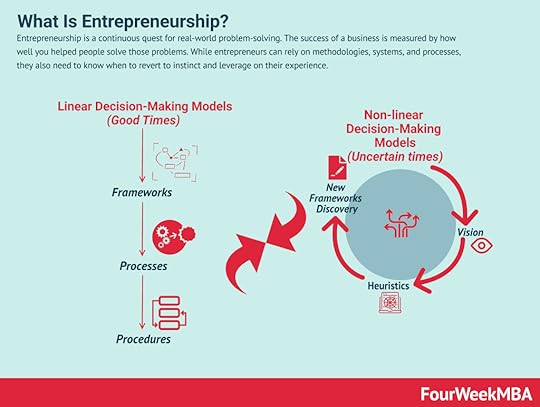 Entrepreneurship is a continuous quest for real-world problem-solving. The success of a business is measured by how well you helped people solve those problems. While entrepreneurs can rely on methodologies, systems, and processes, they also need to know when to revert to instinct and leverage on their experience.What is a Business Model?
Entrepreneurship is a continuous quest for real-world problem-solving. The success of a business is measured by how well you helped people solve those problems. While entrepreneurs can rely on methodologies, systems, and processes, they also need to know when to revert to instinct and leverage on their experience.What is a Business Model? A business model is a framework for finding a systematic way to unlock long-term value for an organization while delivering value to customers and capturing value through monetization strategies. A business model is a holistic framework to understand, design, and test your business assumptions in the marketplace.What is a Digital Business Model?
A business model is a framework for finding a systematic way to unlock long-term value for an organization while delivering value to customers and capturing value through monetization strategies. A business model is a holistic framework to understand, design, and test your business assumptions in the marketplace.What is a Digital Business Model?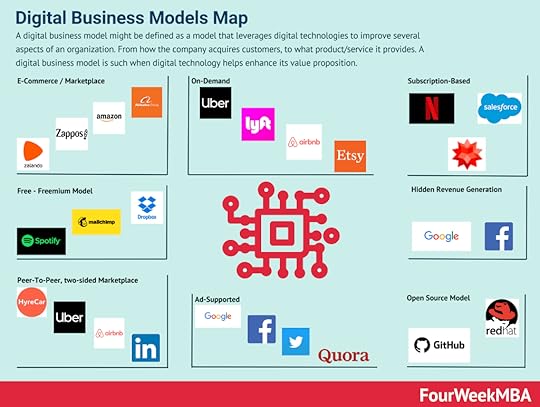 A digital business model might be defined as a model that leverages digital technologies to improve several aspects of an organization. From how the company acquires customers, to what product/service it provides. A digital business model is such when digital technology helps enhance its value proposition.What is a Tech Business Model?
A digital business model might be defined as a model that leverages digital technologies to improve several aspects of an organization. From how the company acquires customers, to what product/service it provides. A digital business model is such when digital technology helps enhance its value proposition.What is a Tech Business Model?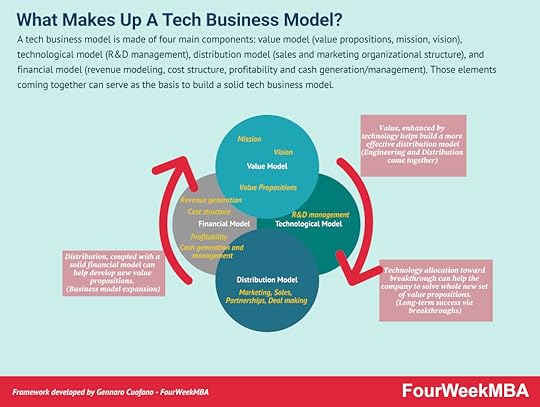 A tech business model is made of four main components: value model (value propositions, mission, vision), technological model (R&D management), distribution model (sales and marketing organizational structure), and financial model (revenue modeling, cost structure, profitability and cash generation/management). Those elements coming together can serve as the basis to build a solid tech business model.What is Business Analysis?
A tech business model is made of four main components: value model (value propositions, mission, vision), technological model (R&D management), distribution model (sales and marketing organizational structure), and financial model (revenue modeling, cost structure, profitability and cash generation/management). Those elements coming together can serve as the basis to build a solid tech business model.What is Business Analysis? 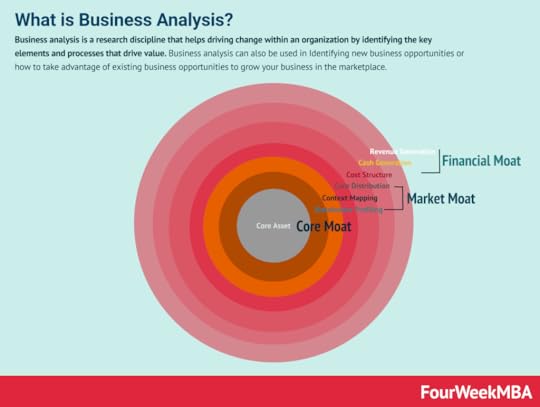 Business analysis is a research discipline that helps driving change within an organization by identifying the key elements and processes that drive value. Business analysis can also be used in Identifying new business opportunities or how to take advantage of existing business opportunities to grow your business in the marketplace. What is Agile Business Analysis?
Business analysis is a research discipline that helps driving change within an organization by identifying the key elements and processes that drive value. Business analysis can also be used in Identifying new business opportunities or how to take advantage of existing business opportunities to grow your business in the marketplace. What is Agile Business Analysis?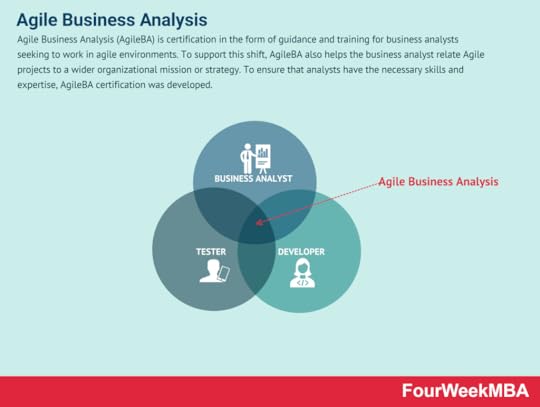 Agile Business Analysis (AgileBA) is certification in the form of guidance and training for business analysts seeking to work in agile environments. To support this shift, AgileBA also helps the business analyst relate Agile projects to a wider organizational mission or strategy. To ensure that analysts have the necessary skills and expertise, AgileBA certification was developed.What is a Competitor Analysis?
Agile Business Analysis (AgileBA) is certification in the form of guidance and training for business analysts seeking to work in agile environments. To support this shift, AgileBA also helps the business analyst relate Agile projects to a wider organizational mission or strategy. To ensure that analysts have the necessary skills and expertise, AgileBA certification was developed.What is a Competitor Analysis?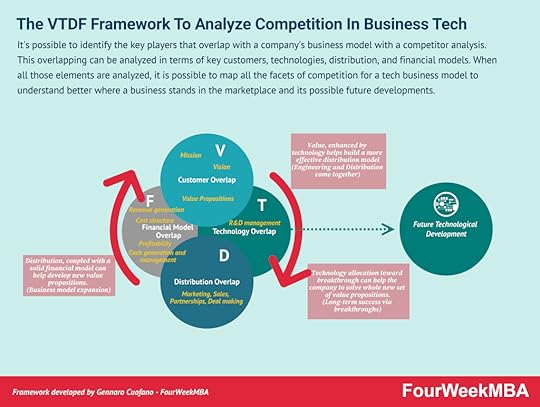 It’s possible to identify the key players that overlap with a company’s business model with a competitor analysis. This overlapping can be analyzed in terms of key customers, technologies, distribution, and financial models. When all those elements are analyzed, it is possible to map all the facets of competition for a tech business model to understand better where a business stands in the marketplace and its possible future developments. What is Design Thinking?
It’s possible to identify the key players that overlap with a company’s business model with a competitor analysis. This overlapping can be analyzed in terms of key customers, technologies, distribution, and financial models. When all those elements are analyzed, it is possible to map all the facets of competition for a tech business model to understand better where a business stands in the marketplace and its possible future developments. What is Design Thinking?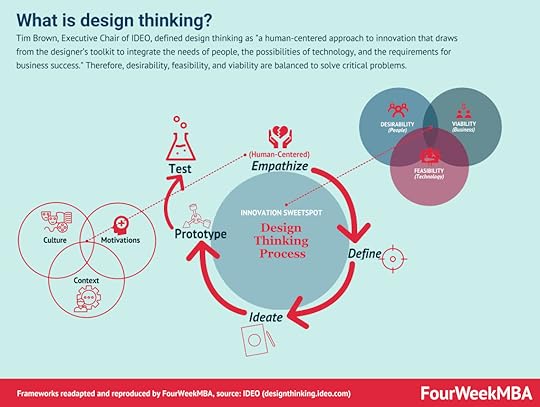 Tim Brown, Executive Chair of IDEO, defined design thinking as “a human-centered approach to innovation that draws from the designer’s toolkit to integrate the needs of people, the possibilities of technology, and the requirements for business success.” Therefore, desirability, feasibility, and viability are balanced to solve critical problems. What is Business Model Innovation?
Tim Brown, Executive Chair of IDEO, defined design thinking as “a human-centered approach to innovation that draws from the designer’s toolkit to integrate the needs of people, the possibilities of technology, and the requirements for business success.” Therefore, desirability, feasibility, and viability are balanced to solve critical problems. What is Business Model Innovation? 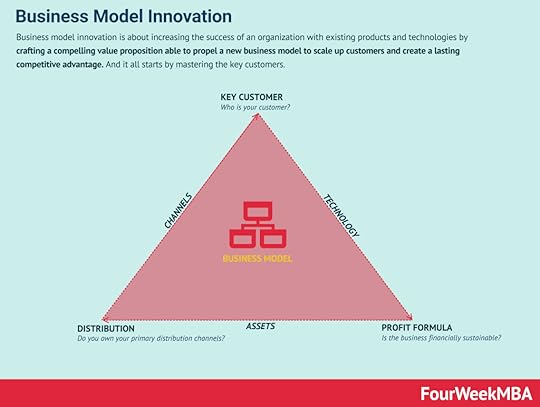 Business model innovation is about increasing the success of an organization with existing products and technologies by crafting a compelling value proposition able to propel a new business model to scale up customers and create a lasting competitive advantage. And it all starts by mastering the key customers.What is a Lean Startup?
Business model innovation is about increasing the success of an organization with existing products and technologies by crafting a compelling value proposition able to propel a new business model to scale up customers and create a lasting competitive advantage. And it all starts by mastering the key customers.What is a Lean Startup? The lean startup canvas is an adaptation by Ash Maurya of the business model canvas by Alexander Osterwalder, which adds a layer that focuses on problems, solutions, key metrics, unfair advantage based, and a unique value proposition. Thus, starting from mastering the problem rather than the solution.What is an MVP?
The lean startup canvas is an adaptation by Ash Maurya of the business model canvas by Alexander Osterwalder, which adds a layer that focuses on problems, solutions, key metrics, unfair advantage based, and a unique value proposition. Thus, starting from mastering the problem rather than the solution.What is an MVP?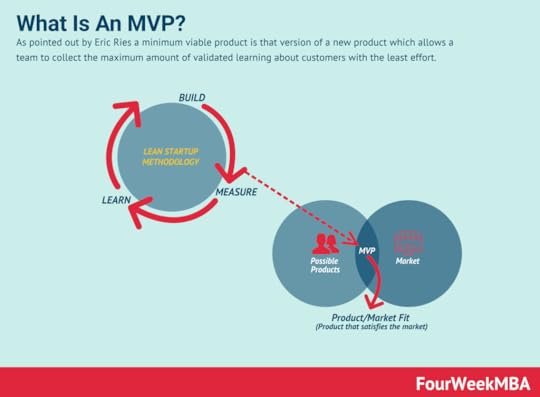 As pointed out by Eric Ries, a minimum viable product is that version of a new product which allows a team to collect the maximum amount of validated learning about customers with the least effort through a cycle of build, measure, learn; that is the foundation of the lean startup methodology.What is Continuous Innovation?
As pointed out by Eric Ries, a minimum viable product is that version of a new product which allows a team to collect the maximum amount of validated learning about customers with the least effort through a cycle of build, measure, learn; that is the foundation of the lean startup methodology.What is Continuous Innovation?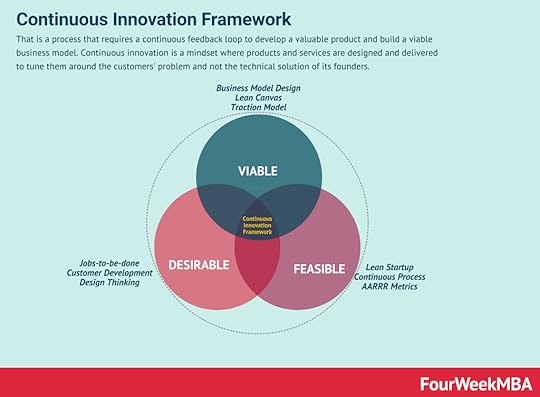 That is a process that requires a continuous feedback loop to develop a valuable product and build a viable business model. Continuous innovation is a mindset where products and services are designed and delivered to tune them around the customers’ problem and not the technical solution of its founders.What Is The Jobs-To-Be-Done Framework?
That is a process that requires a continuous feedback loop to develop a valuable product and build a viable business model. Continuous innovation is a mindset where products and services are designed and delivered to tune them around the customers’ problem and not the technical solution of its founders.What Is The Jobs-To-Be-Done Framework?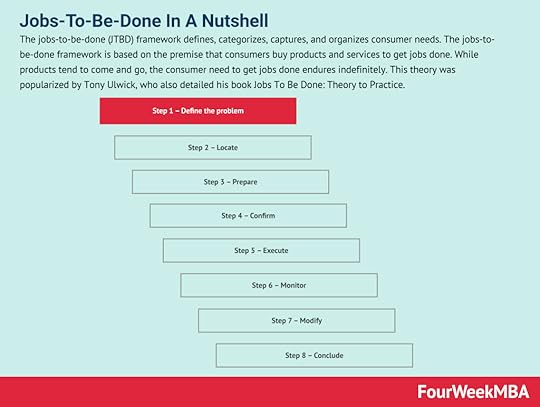 The jobs-to-be-done (JTBD) framework defines, categorizes, captures, and organizes consumer needs. The jobs-to-be-done framework is based on the premise that consumers buy products and services to get jobs done. While products tend to come and go, the consumer need to get jobs done endures indefinitely. This theory was popularized by Tony Ulwick, who also detailed his book Jobs To Be Done: Theory to Practice.What is Growth Hacking?
The jobs-to-be-done (JTBD) framework defines, categorizes, captures, and organizes consumer needs. The jobs-to-be-done framework is based on the premise that consumers buy products and services to get jobs done. While products tend to come and go, the consumer need to get jobs done endures indefinitely. This theory was popularized by Tony Ulwick, who also detailed his book Jobs To Be Done: Theory to Practice.What is Growth Hacking?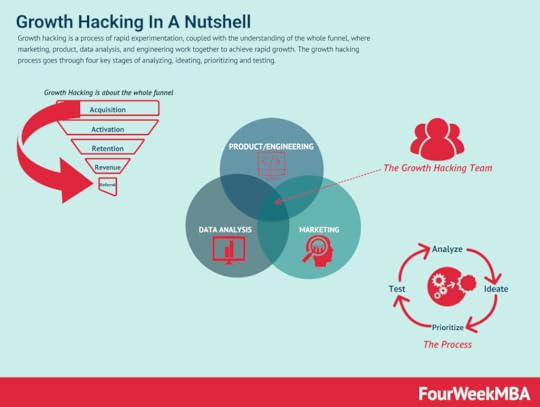 Growth hacking is a process of rapid experimentation, coupled with the understanding of the whole funnel, where marketing, product, data analysis, and engineering work together to achieve rapid growth. The growth hacking process goes through four key stages of analyzing, ideating, prioritizing and testing.
Growth hacking is a process of rapid experimentation, coupled with the understanding of the whole funnel, where marketing, product, data analysis, and engineering work together to achieve rapid growth. The growth hacking process goes through four key stages of analyzing, ideating, prioritizing and testing. Main Free Guides:
Business ModelsBusiness StrategyBusiness DevelopmentDigital Business ModelsDistribution ChannelsMarketing StrategyPlatform Business ModelsTech Business ModelThe post Business Glossary appeared first on FourWeekMBA.
Blockchain Glossary
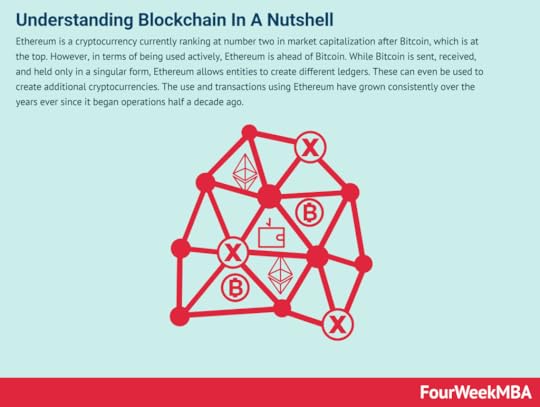 Blockchain technology is the use of cryptography to link data. It is basically a list of records that is unalterable. Along with this, it is also decentralized meaning it is not in the control of a single entity and is distributed among several entities to divide the power. In order to link the data is linked through a process known as “cryptographic hashing”. It uses a mathematical algorithm to map the data of arbitrary size to a fixed size. Blockchain Business Models
Blockchain technology is the use of cryptography to link data. It is basically a list of records that is unalterable. Along with this, it is also decentralized meaning it is not in the control of a single entity and is distributed among several entities to divide the power. In order to link the data is linked through a process known as “cryptographic hashing”. It uses a mathematical algorithm to map the data of arbitrary size to a fixed size. Blockchain Business Models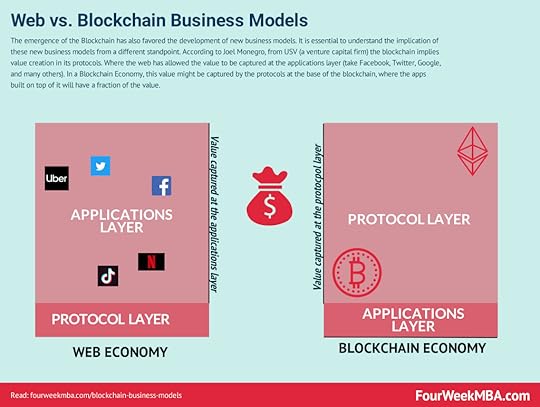 The emergence of the Blockchain has also favored the development of new business models. It is essential to understand the implication of these new business models from a different standpoint. According to Joel Monegro, from USV (a venture capital firm) the blockchain implies value creation in its protocols. Where the web has allowed the value to be captured at the applications layer (take Facebook, Twitter, Google, and many others). In a Blockchain Economy, this value might be captured by the protocols at the base of the blockchain, where the apps built on top of it will have a fraction of the value. Blockchain Economics
The emergence of the Blockchain has also favored the development of new business models. It is essential to understand the implication of these new business models from a different standpoint. According to Joel Monegro, from USV (a venture capital firm) the blockchain implies value creation in its protocols. Where the web has allowed the value to be captured at the applications layer (take Facebook, Twitter, Google, and many others). In a Blockchain Economy, this value might be captured by the protocols at the base of the blockchain, where the apps built on top of it will have a fraction of the value. Blockchain Economics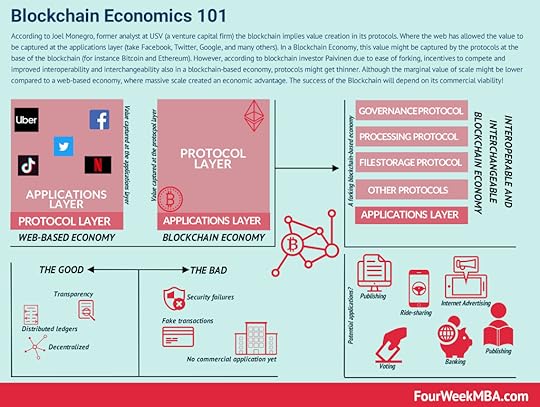 According to Joel Monegro, former analyst at USV (a venture capital firm) the blockchain implies value creation in its protocols. Where the web has allowed the value to be captured at the applications layer (take Facebook, Twitter, Google, and many others).In a Blockchain Economy, this value might be captured by the protocols at the base of the blockchain (for instance Bitcoin and Ethereum). However, according to blockchain investor Paivinen due to ease of forking, incentives to compete and improved interoperability and interchangeability also in a blockchain-based economy, protocols might get thinner.Although the marginal value of scale might be lower compared to a web-based economy, where massive scale created an economic advantage. The success of the Blockchain will depend on its commercial viability!Ethereum Blockchain
According to Joel Monegro, former analyst at USV (a venture capital firm) the blockchain implies value creation in its protocols. Where the web has allowed the value to be captured at the applications layer (take Facebook, Twitter, Google, and many others).In a Blockchain Economy, this value might be captured by the protocols at the base of the blockchain (for instance Bitcoin and Ethereum). However, according to blockchain investor Paivinen due to ease of forking, incentives to compete and improved interoperability and interchangeability also in a blockchain-based economy, protocols might get thinner.Although the marginal value of scale might be lower compared to a web-based economy, where massive scale created an economic advantage. The success of the Blockchain will depend on its commercial viability!Ethereum Blockchain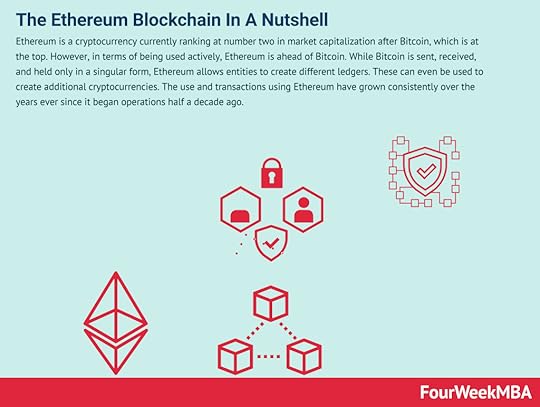 Ethereum is a cryptocurrency currently ranking at number two in market capitalization after Bitcoin, which is at the top. However, in terms of being used actively, Ethereum is ahead of Bitcoin. While Bitcoin is sent, received, and held only in a singular form, Ethereum allows entities to create different ledgers. These can even be used to create additional cryptocurrencies. The use and transactions using Ethereum have grown consistently over the years ever since it began operations half a decade ago. Smart Contracts
Ethereum is a cryptocurrency currently ranking at number two in market capitalization after Bitcoin, which is at the top. However, in terms of being used actively, Ethereum is ahead of Bitcoin. While Bitcoin is sent, received, and held only in a singular form, Ethereum allows entities to create different ledgers. These can even be used to create additional cryptocurrencies. The use and transactions using Ethereum have grown consistently over the years ever since it began operations half a decade ago. Smart Contracts Smart contracts are protocols designed to facilitate, verify, or enforce digital contracts without the need for a credible third party. These contracts work on an “if/when-then” principle and have some similarities to modern escrow services but without a third party involved in guaranteeing the transaction. Instead, it uses blockchain technology to verify the information and increase trust between the transaction participants.Stablecoins
Smart contracts are protocols designed to facilitate, verify, or enforce digital contracts without the need for a credible third party. These contracts work on an “if/when-then” principle and have some similarities to modern escrow services but without a third party involved in guaranteeing the transaction. Instead, it uses blockchain technology to verify the information and increase trust between the transaction participants.Stablecoins 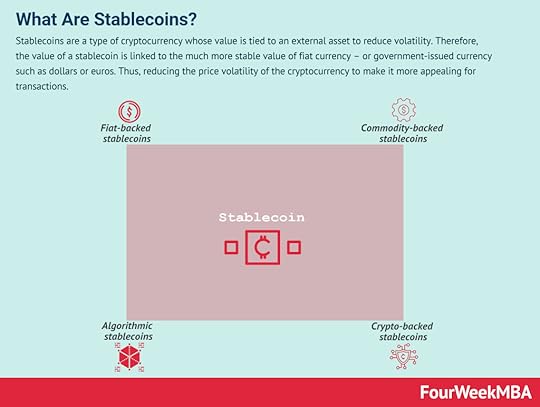 Stablecoins are a type of cryptocurrency whose value is tied to an external asset to reduce volatility. Therefore, the value of a stablecoin is linked to the much more stable value of fiat currency – or government-issued currency such as dollars or euros. Thus, reducing the price volatility of the cryptocurrency to make it more appealing for transactions. Decentralized Finance
Stablecoins are a type of cryptocurrency whose value is tied to an external asset to reduce volatility. Therefore, the value of a stablecoin is linked to the much more stable value of fiat currency – or government-issued currency such as dollars or euros. Thus, reducing the price volatility of the cryptocurrency to make it more appealing for transactions. Decentralized Finance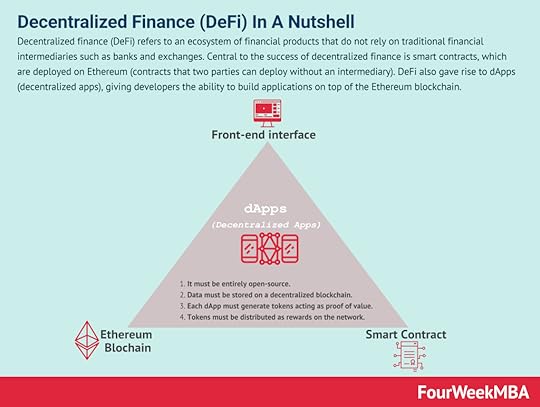 Decentralized finance (DeFi) refers to an ecosystem of financial products that do not rely on traditional financial intermediaries such as banks and exchanges. Central to the success of decentralized finance is smart contracts, which are deployed on Ethereum (contracts that two parties can deploy without an intermediary). DeFi also gave rise to dApps (decentralized apps), giving developers the ability to build applications on top of the Ethereum blockchain.Non-fungible Tokens
Decentralized finance (DeFi) refers to an ecosystem of financial products that do not rely on traditional financial intermediaries such as banks and exchanges. Central to the success of decentralized finance is smart contracts, which are deployed on Ethereum (contracts that two parties can deploy without an intermediary). DeFi also gave rise to dApps (decentralized apps), giving developers the ability to build applications on top of the Ethereum blockchain.Non-fungible Tokens Non-fungible tokens (NFTs) are cryptographic tokens that represent something unique. Non-fungible assets are those that are not mutually interchangeable. Non-fungible tokens contain identifying information that makes them unique. Unlike Bitcoin – which has a supply of 21 million identical coins – they cannot be exchanged like for like. Proof of Work
Non-fungible tokens (NFTs) are cryptographic tokens that represent something unique. Non-fungible assets are those that are not mutually interchangeable. Non-fungible tokens contain identifying information that makes them unique. Unlike Bitcoin – which has a supply of 21 million identical coins – they cannot be exchanged like for like. Proof of Work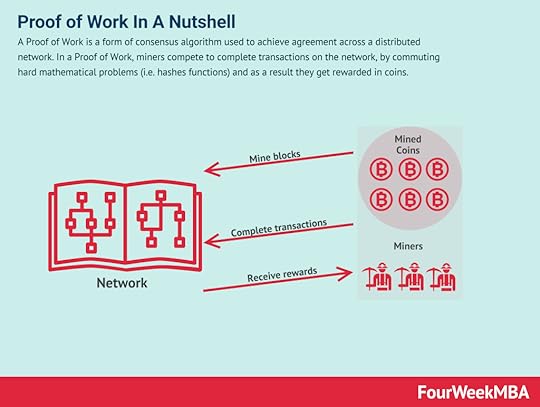 A Proof of Work is a form of consensus algorithm used to achieve agreement across a distributed network. In a Proof of Work, miners compete to complete transactions on the network, by commuting hard mathematical problems (i.e. hashes functions) and as a result they get rewarded in coins. Proof of Stake
A Proof of Work is a form of consensus algorithm used to achieve agreement across a distributed network. In a Proof of Work, miners compete to complete transactions on the network, by commuting hard mathematical problems (i.e. hashes functions) and as a result they get rewarded in coins. Proof of Stake A Proof of Stake (PoS) is a form of consensus algorithm used to achieve agreement across a distributed network. As such it is, together with Proof of Work, among the key consensus algorithms for Blockchain protocols (like the Ethereum’s Casper protocol). Proof of Stake has the advantage of security, reduced risk of centralization, and energy efficiency.
A Proof of Stake (PoS) is a form of consensus algorithm used to achieve agreement across a distributed network. As such it is, together with Proof of Work, among the key consensus algorithms for Blockchain protocols (like the Ethereum’s Casper protocol). Proof of Stake has the advantage of security, reduced risk of centralization, and energy efficiency.Main Free Guides:
Business ModelsBusiness StrategyBusiness DevelopmentDigital Business ModelsDistribution ChannelsMarketing StrategyPlatform Business ModelsTech Business ModelThe post Blockchain Glossary appeared first on FourWeekMBA.
Technologies To Watch Out In 2021
The business world evolves slowly, then rapidly, and that is often since before an industry is born, it requires the development of several concurrent technologies.
In the next five to ten years, a few industries might be interesting. Those will go from AI to autonomous driving, virtual realitty, 3D printing, IoT, and more. And those all have a few technologies in common to make them possibnle in the first place. Let’s see them all.
 Blockchain technology is the use of cryptography to link data. It is basically a list of records that is unalterable. Along with this, it is also decentralized meaning it is not in the control of a single entity and is distributed among several entities to divide the power. In order to link the data is linked through a process known as “cryptographic hashing”. It uses a mathematical algorithm to map the data of arbitrary size to a fixed size.
Blockchain technology is the use of cryptography to link data. It is basically a list of records that is unalterable. Along with this, it is also decentralized meaning it is not in the control of a single entity and is distributed among several entities to divide the power. In order to link the data is linked through a process known as “cryptographic hashing”. It uses a mathematical algorithm to map the data of arbitrary size to a fixed size. 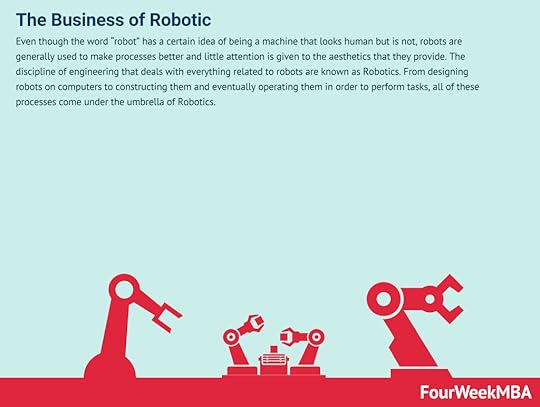 Even though the word “robot” has a certain idea of being a machine that looks human but is not, robots are generally used to make processes better and little attention is given to the aesthetics that they provide. The discipline of engineering that deals with everything related to robots are known as Robotics. From designing robots on computers to constructing them and eventually operating them in order to perform tasks, all of these processes come under the umbrella of Robotics.
Even though the word “robot” has a certain idea of being a machine that looks human but is not, robots are generally used to make processes better and little attention is given to the aesthetics that they provide. The discipline of engineering that deals with everything related to robots are known as Robotics. From designing robots on computers to constructing them and eventually operating them in order to perform tasks, all of these processes come under the umbrella of Robotics.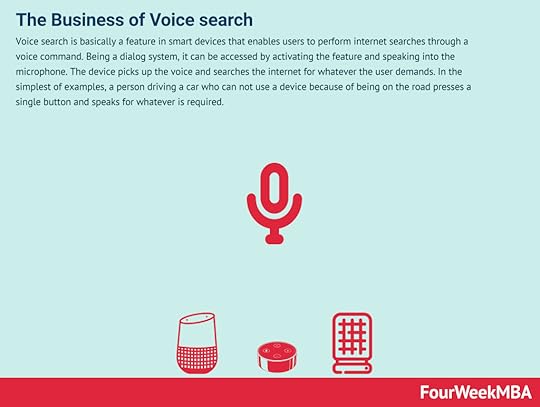 Voice search is basically a feature in smart devices that enables users to perform internet searches through a voice command. Being a dialog system, it can be accessed by activating the feature and speaking into the microphone. The device picks up the voice and searches the internet for whatever the user demands. In the simplest of examples, a person driving a car who can not use a device because of being on the road presses a single button and speaks for whatever is required.
Voice search is basically a feature in smart devices that enables users to perform internet searches through a voice command. Being a dialog system, it can be accessed by activating the feature and speaking into the microphone. The device picks up the voice and searches the internet for whatever the user demands. In the simplest of examples, a person driving a car who can not use a device because of being on the road presses a single button and speaks for whatever is required.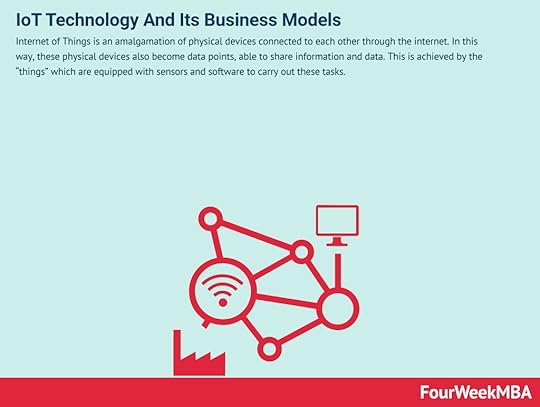 Internet of Things is an amalgamation of physical devices connected to each other through the internet. In this way, these physical devices also become data points, able to share information and data. This is achieved by the “things” which are equipped with sensors and software to carry out these tasks.
Internet of Things is an amalgamation of physical devices connected to each other through the internet. In this way, these physical devices also become data points, able to share information and data. This is achieved by the “things” which are equipped with sensors and software to carry out these tasks. 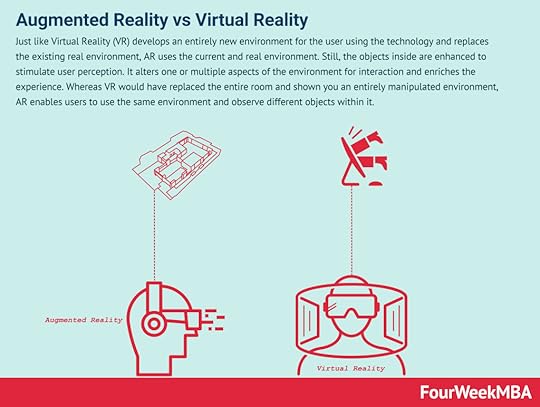 Just like Virtual Reality (VR) develops an entirely new environment for the user using the technology and replaces the existing real environment, AR uses the current and real environment. Still, the objects inside are enhanced to stimulate user perception. It alters one or multiple aspects of the environment for interaction and enriches the experience. Whereas VR would have replaced the entire room and shown you an entirely manipulated environment, AR enables users to use the same environment and observe different objects within it.
Just like Virtual Reality (VR) develops an entirely new environment for the user using the technology and replaces the existing real environment, AR uses the current and real environment. Still, the objects inside are enhanced to stimulate user perception. It alters one or multiple aspects of the environment for interaction and enriches the experience. Whereas VR would have replaced the entire room and shown you an entirely manipulated environment, AR enables users to use the same environment and observe different objects within it.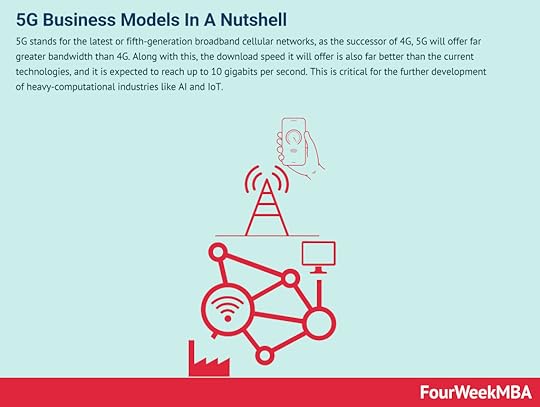 5G stands for the latest or fifth-generation broadband cellular networks, as the successor of 4G, 5G will offer far greater bandwidth than 4G. Along with this, the download speed it will offer is also far better than the current technologies, and it is expected to reach up to 10 gigabits per second. This is critical for the further development of heavy-computational industries like AI and IoT.
5G stands for the latest or fifth-generation broadband cellular networks, as the successor of 4G, 5G will offer far greater bandwidth than 4G. Along with this, the download speed it will offer is also far better than the current technologies, and it is expected to reach up to 10 gigabits per second. This is critical for the further development of heavy-computational industries like AI and IoT. 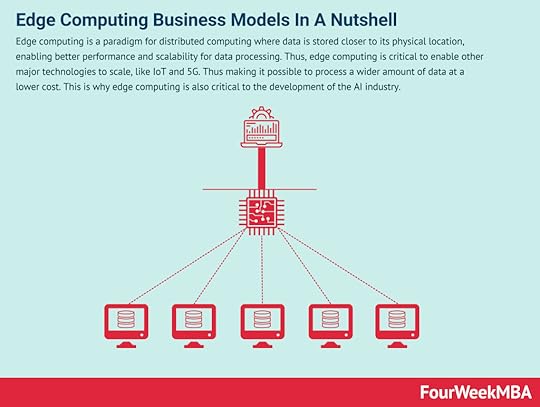 Edge computing is a paradigm for distributed computing where data is stored closer to its physical location, enabling better performance and scalability for data processing. Thus, edge computing is critical to enable other major technologies to scale, like IoT and 5G. Thus making it possible to process a wider amount of data at a lower cost. This is why edge computing is also critical to the development of the AI industry.
Edge computing is a paradigm for distributed computing where data is stored closer to its physical location, enabling better performance and scalability for data processing. Thus, edge computing is critical to enable other major technologies to scale, like IoT and 5G. Thus making it possible to process a wider amount of data at a lower cost. This is why edge computing is also critical to the development of the AI industry. 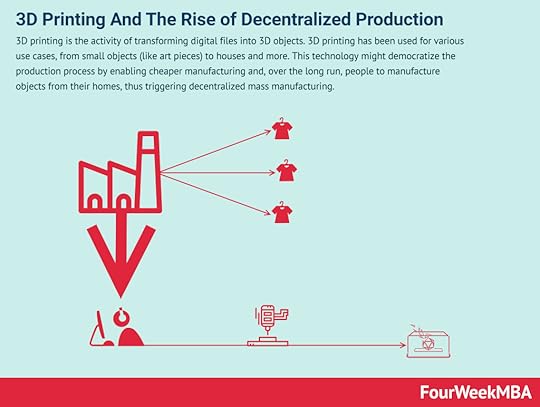 3D printing is the activity of transforming digital files into 3D objects. 3D printing has been used for various use cases, from small objects (like art pieces) to houses and more. This technology might democratize the production process by enabling cheaper manufacturing and, over the long run, people to manufacture objects from their homes, thus triggering decentralized mass manufacturing.
3D printing is the activity of transforming digital files into 3D objects. 3D printing has been used for various use cases, from small objects (like art pieces) to houses and more. This technology might democratize the production process by enabling cheaper manufacturing and, over the long run, people to manufacture objects from their homes, thus triggering decentralized mass manufacturing. Main Free Guides:
Business ModelsBusiness StrategyBusiness DevelopmentDigital Business ModelsDistribution ChannelsMarketing StrategyPlatform Business ModelsTech Business ModelThe post Technologies To Watch Out In 2021 appeared first on FourWeekMBA.
February 15, 2021
Blockchain In A Nutshell And Why It Matters In Business
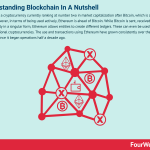
Blockchain technology is the use of cryptography to link data. It is basically a list of records that is unalterable. Along with this, it is also decentralized meaning it is not in the control of a single entity and is distributed among several entities to divide the power. In order to link the data is linked through a process known as “cryptographic hashing”. It uses a mathematical algorithm to map the data of arbitrary size to a fixed size.
How does the Blockchain work?The function is one way; it cannot be inverted. A timestamp is also a part that reduces the risk of alteration in the data. No modifications can be made in a single part of the data as the data is linked across the channels. In order for it to be modified or altered, the entire block of data would need to be altered which becomes a daunting task.
The chain of data contains blocks and each block contains data, a nonce, and a hash. The blocks of data are created using the technique called mining. Mining usually involves solving very complex math problems to identify the nonce that in turn generates a hash. Mining is a very complex process and in order to alter the data, one has to re-mine the data. Due to its decentralized nature, it is not restricted to one device and can be accessed through nodes. This allows for greater flexibility. There are a lot of risks that come with the centralization of data but blockchain uses peer to peer network. The risk is reduced because there is no central point of failure and is divided throughout the different nodes.
Blockchain applicationsBlockchain is commonly known for its uses in cryptocurrency and decentralized financial transactions. Though that is one very common application of blockchain services, the applications that it offers are of a wide variety. One of the biggest applications that it offers is the protection of healthcare data.
Since healthcare records are private and require immense protection but at the same time access to relevant authorities, blockchain provides a platform to be used for the safe transfer of data. In the world of finance, blockchain provides a lot of services in what is known as decentralized finance (DeFi). In simple words, it basically is a means of financial transactions between buyers and sellers without any intermediaries in between.
For businesses that rely heavily on technology and storing data using cloud services, blockchain offers much cheaper alternatives in this aspect. It is estimated that over 22 billion dollars are spent annually on cloud services. These could be reduced dramatically through blockchain. Two different things will be achieved through this; one, it will reduce the costs of data storage for companies and private users, and two, it will generate new revenue streams for average users.
Companies, which have to make payments to employees especially those who are foreign, incur costs in transferring the money through different financial institutions. Due to the presence of numerous intermediaries in the entire process, costs are incurred in making the transactions.
These costs will virtually become non-existent with the use of blockchain technologies. It will not only save money for the company but also the time in making the transaction. International transactions typically have a large number of intermediaries in between which not only makes the entire process costly but also time-consuming and blockchain takes care of both these issues.
In the insurance world, blockchain offers great services through a process known as “smart contracts”. Through blockchain applications, these contracts can be made and managed in a very transparent manner. The blockchain has the ability to record the claims and the contract and also validates them by the network which leaves no room for any invalid claims as they will be rejected by the blockchain.
Peer-to-peer transactions are available with the current financial systems but some of them have certain limitations like geographical unavailability of the service. These can be mitigated through the use of blockchain which enables not only individuals but businesses to carry out their respective financial activities without being limited by factors like geography.
Since the blockchain services are not centralized, the advantage it gives businesses is huge in terms of cybersecurity. Hacking has been a threat to all online businesses or any business with some sort of an online presence. Due to the decentralized nature of blockchain, it provides an advantage to businesses in terms of cybersecurity.
End to end encryption is also a feature provided through the use of blockchain. As the world moves towards integrating more and more IoT devices, blockchain services can provide applications to make the transition smoother. It can help in asset tracking by monitoring machinery and parts. This data can be recorded using this method as opposed to the current costly cloud storing methods.
In the future, it is expected that blockchain will become the standard for transactions, especially in international finance. Along with this, it is expected to improve the processes of companies by not only storing data but also enhancing operations by safely transmitting it to relevant areas for better optimization.
Blockchain even has applications for use by different Governments around the world. Voting can be ensured in an efficient and safe manner through the use of blockchain. The primary concern is voter information, which is taken care of by the high level of security that blockchain, offers for its services. The electoral process can be enhanced by the institutions responsible for it.
The future possibilities that blockchain offers for businesses are endless. It saves both time and money through all industries. From financial transactions to ensure the safety of user identities and from providing transparent contracts to storing data, blockchain offers great applications, which can be utilized by businesses in order to improve their processes. Its applications go well beyond what it is most commonly known for i.e. cryptocurrency. Regulation on the current systems can boost the overall use of these technologies and increase the confidence of both businesses and their users.
Read Next: Decentralized Finance, Blockchain Economics, Bitcoin, Ethereum.
Main Free Guides:
Business ModelsBusiness StrategyBusiness DevelopmentDigital Business ModelsDistribution ChannelsMarketing StrategyPlatform Business ModelsTech Business ModelThe post Blockchain In A Nutshell And Why It Matters In Business appeared first on FourWeekMBA.
Ethereum Blockchain In A Nutshell

Ethereum is a cryptocurrency currently ranking at number two in market capitalization after Bitcoin, which is at the top. However, in terms of being used actively, Ethereum is ahead of Bitcoin. While Bitcoin is sent, received, and held only in a singular form, Ethereum allows entities to create different ledgers. These can even be used to create additional cryptocurrencies. The use and transactions using Ethereum have grown consistently over the years ever since it began operations half a decade ago.
Why does Ethereum matter?Banking can be traced back to 2000BC when merchants began to give loans to farmers and traders. They used to carry goods and the transactions began to be noted down. With each passing century as the interaction between people increased, a more centralized system began to be developed which turned into the banking system that we witness in the world today.
From a small transaction occurring in a remote village through card payment to the mergers of big companies on Wall Street, everything is monitored by the banking system. With every transaction, there are intermediaries between the buyer and the seller.
The control of financial institutions over every transaction that occurs does not sit right with everyone. Banks are seen as an evil force, which controls every aspect of human lives. In order to disrupt the operations of these financial intermediaries and break their control over the money that people have, the concept of Decentralized Finance or DeFi has been introduced. DeFi is inspired by blockchain. Blockchain distributes the copy of transactions occurring over several entities and hence, decentralizes the system so that no single entity can have control over them.
This is important because, in a centralized system, the speed of the transactions is less and people have less direct control over their own money. DeFi is basically an extension using blockchain technologies in going against the centralized systems. With the concept of DeFi, the intermediaries are eliminated between the buyer and seller. All of the financial institutions are cut out using this technology. Loans and insurances, even crowdfunding is controlled by financial institutions and one of the biggest advantages of DeFi is to cut out these intermediaries.
Understanding Ethereum & Decentralized FinanceEthereum allows digital transactions in the simplest form but also allows entities to move towards a decentralized system. It protects in terms of being outside the control companies and governments. These institutions are cut out of the picture by the use of Ethereum. Ethereum offers what is known as a “smart contract” by the use of which transactions automatically occur if certain predefined conditions are met.
As a simple example, it can be written in a smart contract that the transaction is to be done on a certain Wednesday if the temperature in San Francisco drops below 30 degrees centigrade according to accuweather.com. Having these smart at the core of the ideology behind Ethereum, numerous applications of DeFi are operating Ethereum.
The biggest application of DeFi is a decentralized exchange (DEX). While online exchanges allow users to exchange currencies either for other currencies or bitcoins, for example, DEXs connect users directly to each other. By this direct connection, all intermediaries are cut out of the picture and the users do not have to worry about trusting anyone with their money.
Another application is known as Stablecoin. The concept behind Stablecoin is basically “tying” the cryptocurrency to an asset that is outside the cryptocurrency. As an example, to stabilize the price it can be tied to the Pound or Dollar. It aims to bring stability to the prices set.
To cut out intermediaries from lending, DeFi is used in the process based on Ethereum. Smart contracts are employed in the process and institutions like banks are removed from acting as intermediaries. Platforms like Compound allow users to borrow cryptocurrencies and provides them with the option of offering their own loans. The platform is responsible for setting the interest rates, which allows users to earn money off the money that they loan out.
An algorithm is used in this process, which changes and adjusts the interest rate based on the demand of the cryptocurrency. The users are not required to give out their identity when giving or borrowing loans, which differentiates them from non-DeFi services. Another application revolves around Prediction Markets.
These are betting platforms like on the outcomes of football matches for example. The concept of DeFi prediction markets is the same as regular prediction markets but they differ on the grounds that while in the typical prediction markets intermediaries exist but in DeFi they are not included and the transactions remain user to user.
The concept of DeFi is attractive to many who seek privacy in their financial transactions. However, there are a lot of risks associated with it as well. For new entrants into the DeFi market, there are a lot of uncertainties. It is not easy to make a distinction between the good and the bad projects. There are bugs within DeFi, which sometimes become permanent, and hence the risk is increased. They become permanent because once the smart contracts are initiated, their rules cannot be changed. So, if the bugs are a part of the contract, they become permanent.
The problems that this system faces are in terms of security as well. Hackers have in the past attacked Ethereum and stole millions in the cryptocurrency. It remains a major concern for investors unsure of the investments they are making. The next step in Ethereum is the launching of Ethereum 2.0. The upgrade will increase the speed of transactions that occur per second. Currently, the transactions are around 15 per second, which will increase to tens of thousands per second.
This will be achieved through a process known as “sharding”. This basically means running many blockchains in parallel and then having them share a common blockchain. This will mean that a potential hacker who wants to tamper with one chain will have to tamper with the common consensus and it will end up costing more than what the hacker could make of it. These developments can increase the reliability of Ethereum as an application of DeFi.
Read Next: Decentralized Finance, Blockchain Economics, Bitcoin.
Main Free Guides:
Business ModelsBusiness StrategyBusiness DevelopmentDigital Business ModelsDistribution ChannelsMarketing StrategyPlatform Business ModelsTech Business ModelThe post Ethereum Blockchain In A Nutshell appeared first on FourWeekMBA.
Human Automation And The Business of Robotics
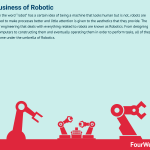
Even though the word “robot” has a certain idea of being a machine that looks human but is not, robots are generally used to make processes better and little attention is given to the aesthetics that they provide. The discipline of engineering that deals with everything related to robots are known as Robotics. From designing robots on computers to constructing them and eventually operating them in order to perform tasks, all of these processes come under the umbrella of Robotics.
Understanding roboticsEase and convenience have been at the forefront of what humans want to achieve. Every step that the entire civilization has taken is a way forward in achieving that dream. To help humans achieve what they have been dreaming of, advancements were made in the production of highly advanced machinery, which not only reduced the manual input required in achieving the tasks at hand but also made the processes quicker and more efficient.
These machines still had to be operated by skilled labor in order to run the tasks. The next step in the process of making machinery more reliable and advanced was automation. Automation reduced the labor requirements in the process thereby reducing manual error and further enhanced the efficiency goals of the businesses. Large industrial plants began replacing labor with highly advanced automated machines, which changed the entire concept of how businesses were run.
The risk associated with human error, loss in efficiency was reduced to a considerable extent, and this began to be seen as a need for advancement. Following the industrial revolution, mass production was achieved through the use of these automated processes. The machinery became increasingly automated with labor now only required for maintenance activities. The reliance continued to increase as it gave a competitive edge to the companies employing these strategies. However, the road did not end here. The next step in this long run of advancements was Robotics.
There exists a certain fascination with a human-created machine, which performs tasks that everyday humans do without feeling the need to rest, eat, or even take a break. The automated machines, which reduced the human effort in performing tasks, are known as robots. Any automated machine, which has the capability of performing the tasks that provide ease to humans, can be termed a robot.
Commercial applicationsNo other robot has been more commercialized than the single-armed huge robot used in industries to perform specific tasks like welding and changed the landscape of many industries around the world. The innovation did not stop there and improvements continued to be made in this field of engineering.
Robots began to appear not only in industrial processes but also in restaurants where managers wanted to ensure hygienic conditions, healthcare where immense precision was required, and even in classrooms for education. Businesses are impacted by these changes following the pandemic as well since safety needed to be considered and more automated processes meant less physical contact required.
The uses of Robotics are widespread and transcend not only national but also industrial borders. One of their biggest uses comes in manufacturing. Mass production to achieve economies of scale has been on the priority of companies, which tend to dominate their industries. While labor is required for job shops and batch processes, a continuous supply line with the same product being produced in hundreds and thousands over the same line requires little to no customization.
Automated machines give companies a competitive edge over their rivals in terms of technological advancements. The demand levels of products shift within a matter of hours or even days and only highly automated companies can withstand what the market moves towards.
With the successful use of Robotics, higher levels of precision can be achieved. One of the primary concerns that come with the use of robots is the safety aspect of it as people are not sure as to how it would operate near humans or what protocol it follows when a human is in the vicinity of the robot. To address these valid concerns, there has been an increasing trend towards making robots safe with the help of sensors and cameras, which enables them to automatically stop their operations in case something is out of order.
Another big use of the robots is in automated drones, which have applications in both military operations and delivery services. For military purposes, unmanned aircraft have been used to conduct strikes. For businesses, drones have begun to be used as a means of delivering goods following the lockdown restrictions of the pandemic.
Similarly, within the health sector robots have been used as companions to patients. These robots are able to monitor the vitals of the patients and can also be programmed to remind patients of when to take medicines. Integrated with hospitals at the back end, these robots provide real-time data on the patient in case something is not right.
Robotics also has a part in the retail industry. To service customers, robots are used instead of the salesforce. Similarly, cashiers are being replaced by robots at checkout counters to fasten the pace of the service provided. In healthcare, robots are also providing help in performing certain exercises that humans need in order to remain fit. Training these robots and embedding them with AI is now the norm.
The use of robots has not been only limited to businesses as Robotics has the potential of being used widely among different industries in improving production efficiencies and also in providing quality service to their customers, but also their use is becoming more common among the general public for random everyday tasks. Businesses using robots whether it is in the form of automated machinery to achieve economies of scale or for innovative problem-solving techniques alike are setting a standard for their competitors. The use leads them forward, though the opportunity for improvement is still immense.
Main Free Guides:
Business ModelsBusiness StrategyBusiness DevelopmentDigital Business ModelsDistribution ChannelsMarketing StrategyPlatform Business ModelsTech Business ModelThe post Human Automation And The Business of Robotics appeared first on FourWeekMBA.
The Business of Voice search And Its Potential Commercial Applications
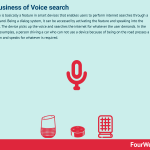
Voice search is basically a feature in smart devices that enables users to perform internet searches through a voice command. Being a dialog system, it can be accessed by activating the feature and speaking into the microphone. The device picks up the voice and searches the internet for whatever the user demands. In the simplest of examples, a person driving a car who can not use a device because of being on the road presses a single button and speaks for whatever is required.
Why does voice search matter?Humans have been seeking comfort since the advent of time. Moving from caves and jungles to skyscrapers and highly civilized societies, a lot of comforts has been achieved through the centuries. Communication developed over time and an era of smart devices was entered into.
Laptops, tablets, desktop computers, and smartphones began to be considered essential to existence. They bridge the physical gap of thousands of miles with the click of a button. Features in these devices provided further ease and convenience to users by integrating new technologies into them. One such technology is voice search.
How does voice search work?The device is configured in such a way that it first recognizes the language the user is speaking and then picks the keywords which the user speaks. After that, an internet search is initiated by the device and the results are obtained. In case a screen is available, the device displays the results. It can also be configured to speak out the results to the user. If a screen is not available, the results are simply read out to the user like in the previous scenario.
To make sense of what the user is trying to say, the device must be equipped with a language understanding capability. The basic English language is found in a majority of the devices given it is an international standard. However, many devices are also able to recognize different languages and perform searches accordingly.
Due to the wide range of where these devices are operated, the language issue is something that will be completely eliminated in the future. Smart devices having voice technology add to the convenience of the users and enhances the user experience.
More and more devices are being integrated with this technology and their use is also becoming widespread. As customers shift towards this trend, it indicates a change in the strategies that businesses need to employ in order to remain on track.
The evolution of searchBusinesses have online websites where they present their products and services. Due to the shift towards online modes of shopping or even obtaining information, a large number of websites have surfaced all over the internet. To remain relevant and make sure the website pops up when the users search using particular keywords, websites use metrics to ensure they are among the top results.
This is done through a process known as Search Engine Optimization (SEO). Search engines rank websites according to a predetermined ranking system. This is achieved through an algorithm that uses a lot of metrics in assessing which websites should be displayed first to enhance user experience. Unlike paid ads, search engines cannot be paid to get higher rankings. The only option for businesses is to design their websites in such a way that they remain relevant and are able to compete with other websites after a user search is initiated.
According to Google officials, twenty percent of the total searches on Google are now initiated through voice search. Among youngsters, the percentage is even larger. For better optimization, businesses have strategies in place. However, with the increasing use of voice search, the metrics need to change or be updated. When a user types, it is mostly keywords, which initiate the search being conducted by the search engine.
The search engine finds the most relevant websites and ranks them for the user to choose from. This is no different from what happens when a user generates a voice search. The search engine follows the same pattern of picking what the user said and search the internet for possible results.
The only thing different now is the fact that typing is different from speaking. While the user might type keywords, due to the interactive nature of voice search assistants like Siri and Alexa, the search is conversational. For example, while typing a person might search “nearby restaurants”. These two keywords will guide what the search engine displays. In the case of voice search, the person might ask “which restaurants are offering dinner right now?” The difference in the number of words used or how the sentence is structured might produce different results from what was displayed through the search performed by typing.
The future of voice searchDue to this shift in the way users now search and interact with their devices, search engine algorithms might display different kinds of results. The built-in strategies that businesses have employed currently to stand out might now need a shift of focus since those were text-based and now there is an increasing shift towards voice-based searching. To successfully maintain or achieve higher rankings by the algorithms, businesses now need to develop new strategies.
These strategies should not only have the capability of dealing with the existing search methods since the majority of searches are still typing based. Besides, businesses need to utilize the market that exists due to the use of voice searches when users interact with their devices. With further development and enhancement of technology in smart devices to be able to make sense of different languages, more and more traffic will move towards voice-based searching.
According to estimates given by Google, around 71% of the population between eighteen and twenty-nine years use voice search. Statistics indicate a far bigger percentage of overall searches to be voice-based. Businesses need to revise their strategies and ensure that both markets are tapped in properly for profit maximization and business sustainability. The future is changing and giving room for creativity, which should be prioritized by businesses, which want to remain relevant.
Main Free Guides:
Business ModelsBusiness StrategyBusiness DevelopmentDigital Business ModelsDistribution ChannelsMarketing StrategyPlatform Business ModelsTech Business ModelThe post The Business of Voice search And Its Potential Commercial Applications appeared first on FourWeekMBA.
IoT Technology And Its Business Models
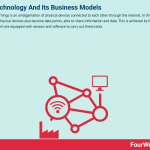
Internet of Things is an amalgamation of physical devices connected to each other through the internet. In this way, these physical devices also become data points, able to share information and data. This is achieved by the “things” which are equipped with sensors and software to carry out these tasks.
The IoT ecosystem and what that implies for businessFollowing the advancement in technologies like 5G, quantum computing, and the like, the trend of an increasing number of devices is observed not only in everyday use but also in the business world. Though it offers high connectivity and an easy and effective flow of communication, it comes with its drawbacks. The biggest concern around this entire concept is the privacy and security of these devices and the uncertainty that exists with the flow of information through unsafe channels.
When it comes to the business world, IoT is bringing about a lot of change. Data is monitored constantly to enhance the efficiencies of the systems and in turn enable companies to make decisions, which will result in favorable outcomes. The increasing reliance on analytics and AI systems makes data easier to read and interpret for better decision making.
IoT enables easy integration of the data that is available to the companies which are then processed through AI and analytical processes. Due to the interconnectivity and fast response time, companies are using this technology to not only make informed decisions but also improve customer experience. In the retail business, innovative technologies are being employed to achieve this goal.
A simple example is the use of smartphone applications, which allow customers to pay directly through their phones instead of having to stay in long queues. This helps retail companies on two fronts. One, customer experience is improved which helps in retention and customer satisfaction. Two, it reduces the time it takes to serve customers and hence more customers can be served in the same amount of time.
Decentralization of data processingAs mentioned previously, data is immensely available to companies in these technological times. With the interaction of different devices hundreds and thousands of miles away, processes can be improved by the data that they share. Edge computing allows data to be processed locally and only the relevant portion to be sent forward.
With this constant communication between the devices or “things”, companies can cut down on costs that were previously incurred due to irregularity of the data and lack of communication. In the railway industry where trains travel hundreds of miles, IoT allows different parts of the trains that need servicing to be analyzed and operated on when needed.
Commercial applicationsPreviously this was done manually which required a lot of time to be consumed and ended up resulting in more servicing charges to remain on the safe side. With proper data and communication between devices, costs can be cut down and processes made smooth.
Different businesses around the world rely on the labor that they have employed. Even in this fast-moving world, labor-oriented businesses do exist and they drive the businesses forward. For these businesses to operate efficiently and effectively, the physical well-being of labor is important.
From a fast-food restaurant chain to big automotive producers, devices with sensors attached are sed by the labor. The data from these IoT devices gets collected in real-time and is constantly monitored by the management to make better decisions. It enables and equips businesses in improving the quality and reliability of the products and services that they offer.
Similarly, tracking devices or even sensors in the retail industry enables businesses to remain on their feet in the sense that it enables them to see which stocks to shelve and can make informed decisions about the demand of certain products with real-time data.
IoT is a tool that will truly revolutionize the business world that stands today. More and more businesses are diverting to the use of these technologies and the trend will increase manifold over time. However, despite its offering of high quality and well-informed decisions, the technology is not all fun and games.
The biggest concern around the entire concept of IoT is the privacy and security that it is threatened with. Unsafe information is not information useful. Access to information in the wrong hands can backfire as entire strategies are built around the real-time data that companies possess.
An increasing trend has been observed in ransomware recently, which further shatters the confidence of business managers to handle data in this manner. It is expected that the global IoT market will increase around five times in half a decade. The opportunities are endless, but the concerns looming over these technologies in terms of data theft and misuse can prove to be hurdles in the way of business progress.
The concerns are not just limited at the end of the business level. With no proper updates and lack of testing, the concerns are further uplifted. Outdated devices will not only be a hurdle in data sharing but are also more prone to being accessed by intruders. Financial businesses are especially more prone to attacks since they deal directly with money and higher stakes.
This makes them vulnerable to hacking attempts and criminal activities. Even in the retail example mentioned above, paying money through smartphones can be intruded with. It saves on time and improves customer experience, but unless it is safe to use it will not become widespread.
The future of IoT is expected to bring changes in every aspect of current human life. Businesses will be able to improve services and be more profitable but at the same time, they are also now more exposed to foreign threats that directly target their practices.
Technology will keep on improving and in the future, it is expected to improve exponentially given the applications that it guarantees. If safety is ensured, the shift will be even quicker than what is observed today. It is not a question of whether IoT will have a much bigger place in businesses in the future, it is only a question of when.
Read Next: Edge Computing, 5G, Quantum Computing.
Main Free Guides:
Business ModelsBusiness StrategyBusiness DevelopmentDigital Business ModelsDistribution ChannelsMarketing StrategyPlatform Business ModelsTech Business ModelThe post IoT Technology And Its Business Models appeared first on FourWeekMBA.
February 14, 2021
Blockchain In A Nutshell And Why It Matters In Business
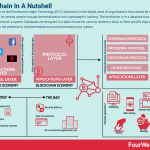
Also referred to as the Distributed Ledger Technology (DLT), blockchain is the digital asset of organizations that cannot be modified. It can be transparent for several people through decentralization and cryptographic hashing. The blockchain is in a database that gathers the information stored on a system. Databases are designed in a table format for users to retrieve a block or filter specific data quickly. This technology has the potential to disintermediate trust and decentralize any system.
Why does the Blockchain matter?Businesses apply blockchain to address complex problems associated with digitization and technological advancements. Blockchain is valuable for business, especially when it comes to managing transactions between different entities. A majority of companies today can miss out on opportunities if they waste time on procedural delays, errors, and a fraction of fees that go into intermediaries.
In a nutshell, a blockchain is a chain of blocks that include insightful information. Every block contains records of the data, its transaction, and timestamp. Nevertheless, the simplistic model became the open-standard protocol in preventing data tampering.
To further understand how blockchain works, it is comparable to the distribution of files through Google Docs. In Google’s word processor, users can create a document, edit its content, and share it with a group of people. Instead of directly transferring the document, it gets shared by the host. This process is closely related to blockchain’s decentralized distribution chain that allows approved users to access data all at once. While a user is altering something within the chain, the party can see the changes in real-time. Modifications get recorded in real-time to provide a sense of transparency across members of the organization.
In contrast with a typical database, blockchains gather data in segments. The segmentation of data separates blocks that hold large datasets. Every block has limited capacity, so soon after one fills up, it proceeds to the next block. It then forms a chain of data that makes up the blockchain.
Overall, blockchain is a revolutionary technology that addresses problems with fraudulent activities and cyber threats.
How Blockchain Transforms the Job Market TodayAs the technical demand increases, the roles for the blockchain industry continue to grow. Technical skills in blockchain involve extensive knowledge of programming technologies and concepts. Blockchain professionals usually display expertise in object-oriented programming, cryptography, and ledger economics.
Many businesses that focus on digital transformation form IT teams that harness knowledge in the blockchain. The recent COVID-19 pandemic reminded them of this need with the requirement for strategy reform to stay afloat. Instead of relying on conventional practices, they utilized blockchain to increase productivity even though most employees work at home. Blockchain goes hand in hand in maintaining the storage of information that is manageable anytime and anywhere. The decentralized network of data gets bound by a set of computers instead of one server. When the network has multiple owners, hacks and threats are instantly resolvable.
Importance of Blockchain Technology in BusinessCompanies are taking notice of these business benefits and embracing blockchain technology for its wide-reaching possibilities. From manufacturing to healthcare to supply chain and beyond, blockchain has much to offer.
Reducing Operational CostsWhen the network is decentralized, companies can reduce operational costs. They can switch their focus to other processes supporting blockchain technology. This technology includes administrative procedures for maintaining transaction and reconciliation records.
Instead of relying on an intermediary, blockchain lets digital entrepreneurs streamline the procurement of products and transactions. For instance, Walmart applied blockchain technology and minimized its time to locate the sources of products to be placed on their shelves. They reduced the time from 1 week to 2.2 seconds, which brought immense savings.
Provides TransparencyTransparency is vital most, especially in businesses that are in the retail and supply management industry. Digital entrepreneurs can streamline the distribution of goods through blockchain technology. Blockchain eliminates the need for a tedious supply chain focusing o monitoring transactions within the blockchain. The data is stored on the distributed ledger, making it easier to track every supply’s progress. Transparency allows multiple employees to access the blockchain. This transparency is helpful in terms of increasing the measures for security.
The blockchain ledger is the one the keeps a record of the exchange of products. Entrepreneurs are then able to track the source of the product through the audit trail. Apart from streamlining processes, businesses can decrease the chances of falling into fraudulent exchange practices. Blockchain allows you to verify if the traded assets are legitimate before making a transaction. In the healthcare industry, blockchain technology helps the owners detect the supply chain. From the manufacturer to its distributors, hospitals can authenticate medical supplies and goods.
SecurityIn contrast with the traditional record-keeping systems, blockchain technology is far more secured and safe. Every transaction performed is monitored and encrypted to ensure the safety of the entrepreneurs. The supply chain is expressed in detail, which means you can find the manufacturer and the transactions linked with the products purchased. Once formed, a network of blocks linked together can never get modified. This precaution ensures no one can tamper within the blockchain, making it safe from cyber threats and fraud. Plus, the blockchain’s decentralized nature ensures either party cannot experience any issues when making transactions.
Decentralized data eliminates the risks posed by the conventional centralized record systems. Instead of relying on a sole person to manage the data and system recovery, data blocks get shared between more than one unit. When the blocks of information spread across the organization, the risks reduce significantly. From two entrepreneurs to a network of parties, all of their data gets encrypted for their privacy and security.
As an example, businesses offer smart contracts via blockchain technology to streamline the deliverables. It ensures that once you finished the tasks they require, the agreement would automatically charge clients for the services. Self-automated programs such as these can protect entrepreneurs against fraud. Plus, you can skip the process of going for an intermediary to file for a dispute if clients didn’t comply.
Blockchain technology is the use of cryptography to link data. It is basically a list of records that is unalterable. Along with this, it is also decentralized meaning it is not in the control of a single entity and is distributed among several entities to divide the power. In order to link the data is linked through a process known as “cryptographic hashing”. It uses a mathematical algorithm to map the data of arbitrary size to a fixed size.
How does the Blockchain work?The function is one way; it cannot be inverted. A timestamp is also a part that reduces the risk of alteration in the data. No modifications can be made in a single part of the data as the data is linked across the channels. In order for it to be modified or altered, the entire block of data would need to be altered which becomes a daunting task.
The chain of data contains blocks and each block contains data, a nonce, and a hash. The blocks of data are created using the technique called mining. Mining usually involves solving very complex math problems to identify the nonce that in turn generates a hash. Mining is a very complex process and in order to alter the data, one has to re-mine the data. Due to its decentralized nature, it is not restricted to one device and can be accessed through nodes. This allows for greater flexibility. There are a lot of risks that come with the centralization of data but blockchain uses peer to peer network. The risk is reduced because there is no central point of failure and is divided throughout the different nodes.
Blockchain applicationsBlockchain is commonly known for its uses in cryptocurrency and decentralized financial transactions. Though that is one very common application of blockchain services, the applications that it offers are of a wide variety. One of the biggest applications that it offers is the protection of healthcare data.
Since healthcare records are private and require immense protection but at the same time access to relevant authorities, blockchain provides a platform to be used for the safe transfer of data. In the world of finance, blockchain provides a lot of services in what is known as decentralized finance (DeFi). In simple words, it basically is a means of financial transactions between buyers and sellers without any intermediaries in between.
For businesses that rely heavily on technology and storing data using cloud services, blockchain offers much cheaper alternatives in this aspect. It is estimated that over 22 billion dollars are spent annually on cloud services. These could be reduced dramatically through blockchain. Two different things will be achieved through this; one, it will reduce the costs of data storage for companies and private users, and two, it will generate new revenue streams for average users.
Companies, which have to make payments to employees especially those who are foreign, incur costs in transferring the money through different financial institutions. Due to the presence of numerous intermediaries in the entire process, costs are incurred in making the transactions.
These costs will virtually become non-existent with the use of blockchain technologies. It will not only save money for the company but also the time in making the transaction. International transactions typically have a large number of intermediaries in between which not only makes the entire process costly but also time-consuming and blockchain takes care of both these issues.
In the insurance world, blockchain offers great services through a process known as “smart contracts”. Through blockchain applications, these contracts can be made and managed in a very transparent manner. The blockchain has the ability to record the claims and the contract and also validates them by the network which leaves no room for any invalid claims as they will be rejected by the blockchain.
Peer-to-peer transactions are available with the current financial systems but some of them have certain limitations like geographical unavailability of the service. These can be mitigated through the use of blockchain which enables not only individuals but businesses to carry out their respective financial activities without being limited by factors like geography.
Since the blockchain services are not centralized, the advantage it gives businesses is huge in terms of cybersecurity. Hacking has been a threat to all online businesses or any business with some sort of an online presence. Due to the decentralized nature of blockchain, it provides an advantage to businesses in terms of cybersecurity.
End to end encryption is also a feature provided through the use of blockchain. As the world moves towards integrating more and more IoT devices, blockchain services can provide applications to make the transition smoother. It can help in asset tracking by monitoring machinery and parts. This data can be recorded using this method as opposed to the current costly cloud storing methods.
In the future, it is expected that blockchain will become the standard for transactions, especially in international finance. Along with this, it is expected to improve the processes of companies by not only storing data but also enhancing operations by safely transmitting it to relevant areas for better optimization.
Blockchain even has applications for use by different Governments around the world. Voting can be ensured in an efficient and safe manner through the use of blockchain. The primary concern is voter information, which is taken care of by the high level of security that blockchain, offers for its services. The electoral process can be enhanced by the institutions responsible for it.
The future possibilities that blockchain offers for businesses are endless. It saves both time and money through all industries. From financial transactions to ensure the safety of user identities and from providing transparent contracts to storing data, blockchain offers great applications, which can be utilized by businesses in order to improve their processes. Its applications go well beyond what it is most commonly known for i.e. cryptocurrency. Regulation on the current systems can boost the overall use of these technologies and increase the confidence of both businesses and their users.
Read Next: Blockchain For business, Blockchain Economics, Proof of Work, Proof of Stake, What is A Bitcoin, Steemit Business Model, Decentralized Finance, Blockchain Economics, Bitcoin, Ethereum.
Main Guides:
Business ModelsBusiness StrategyMarketing StrategyBusiness Model InnovationPlatform Business ModelsNetwork Effects In A NutshellDigital Business ModelsThe post Blockchain In A Nutshell And Why It Matters In Business appeared first on FourWeekMBA.
9 Frameworks For Startups
 Growth marketing is a process of rapid experimentation, which in a way has to be “scientific” by keeping in mind that it is used by startups to grow, quickly. Thus, the “scientific” here is not meant in the academic sense. Growth marketing is expected to unlock growth, quickly and with an often limited budget.
Growth marketing is a process of rapid experimentation, which in a way has to be “scientific” by keeping in mind that it is used by startups to grow, quickly. Thus, the “scientific” here is not meant in the academic sense. Growth marketing is expected to unlock growth, quickly and with an often limited budget. Scrum is a methodology co-created by Ken Schwaber and Jeff Sutherland for effective team collaboration on complex products. Scrum was primarily thought for software development projects to deliver new software capability every 2-4 weeks. It is a sub-group of agile also used in project management to improve startups’ productivity.
Scrum is a methodology co-created by Ken Schwaber and Jeff Sutherland for effective team collaboration on complex products. Scrum was primarily thought for software development projects to deliver new software capability every 2-4 weeks. It is a sub-group of agile also used in project management to improve startups’ productivity. As pointed out by Eric Ries, a minimum viable product is that version of a new product that allows a team to collect the maximum amount of validated learning about customers with the least effort through a cycle of build, measure, learn; that is the foundation of the lean startup methodology.
As pointed out by Eric Ries, a minimum viable product is that version of a new product that allows a team to collect the maximum amount of validated learning about customers with the least effort through a cycle of build, measure, learn; that is the foundation of the lean startup methodology.
 As pointed out by Eric Ries, a minimum viable product is that version of a new product which allows a team to collect the maximum amount of validated learning about customers with the least effort through a cycle of build, measure, learn; that is the foundation of the lean startup methodology.
As pointed out by Eric Ries, a minimum viable product is that version of a new product which allows a team to collect the maximum amount of validated learning about customers with the least effort through a cycle of build, measure, learn; that is the foundation of the lean startup methodology.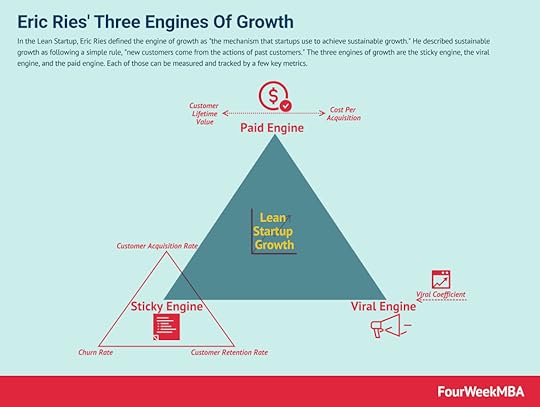 In the Lean Startup, Eric Ries defined the engine of growth as “the mechanism that startups use to achieve sustainable growth.” He described sustainable growth as following a simple rule, “new customers come from the actions of past customers.” The three engines of growth are the sticky engine, the viral engine, and the paid engine. Each of those can be measured and tracked by a few key metrics.
In the Lean Startup, Eric Ries defined the engine of growth as “the mechanism that startups use to achieve sustainable growth.” He described sustainable growth as following a simple rule, “new customers come from the actions of past customers.” The three engines of growth are the sticky engine, the viral engine, and the paid engine. Each of those can be measured and tracked by a few key metrics.  The lean startup canvas is an adaptation by Ash Maurya of the business model canvas by Alexander Osterwalder, which adds a layer that focuses on problems, solutions, key metrics, unfair advantage based, and a unique value proposition. Thus, starting from mastering the problem rather than the solution.
The lean startup canvas is an adaptation by Ash Maurya of the business model canvas by Alexander Osterwalder, which adds a layer that focuses on problems, solutions, key metrics, unfair advantage based, and a unique value proposition. Thus, starting from mastering the problem rather than the solution.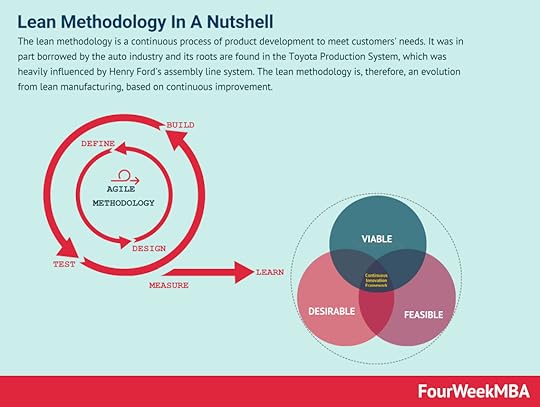 The lean methodology is a continuous process of product development to meet customers’ needs. It was in part borrowed by the auto industry and its roots are found in the Toyota Production System, which was heavily influenced by Henry Ford’s assembly line system. The lean methodology is, therefore, an evolution from lean manufacturing, based on continuous improvement.
The lean methodology is a continuous process of product development to meet customers’ needs. It was in part borrowed by the auto industry and its roots are found in the Toyota Production System, which was heavily influenced by Henry Ford’s assembly line system. The lean methodology is, therefore, an evolution from lean manufacturing, based on continuous improvement.  Kanban is a lean manufacturing framework first developed by Toyota in the late 1940s. The Kanban framework is a means of visualizing work as it moves through identifying potential bottlenecks. It does that through a process called just-in-time (JIT) manufacturing to optimize engineering processes, speed up manufacturing products, and improve the go-to-market strategy.
Kanban is a lean manufacturing framework first developed by Toyota in the late 1940s. The Kanban framework is a means of visualizing work as it moves through identifying potential bottlenecks. It does that through a process called just-in-time (JIT) manufacturing to optimize engineering processes, speed up manufacturing products, and improve the go-to-market strategy. Main Free Guides:
Business ModelsBusiness StrategyBusiness DevelopmentDigital Business ModelsDistribution ChannelsMarketing StrategyPlatform Business ModelsTech Business ModelThe post 9 Frameworks For Startups appeared first on FourWeekMBA.



